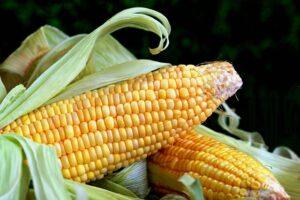Compared to last year, the yield of corn fell by a quarter
The domestic corn harvest this year is expected to be around 5 million tons, 15-20 percent less than a year ago. In addition to the falling average yield, fungal infection is also higher this year, affecting about a third of the crop – it was said on Wednesday at the Agroinform.hu online conference with nearly 150 participants.

(Photo: Pixabay)
Dr. Orsolya Katalin Körösi, the professional and operational director of the Kukorica Kör Egyesület, highlighted in her introductory presentation that after the record-breaking drought in 2022, this summer’s weather also had an extremely unfavorable effect on farmers, so it is more important than ever to explore how to to make corn cultivation sustainable in Hungary. A change of attitude is needed, the automatisms no longer work – emphasized the expert.
By mid-October, 90 percent of domestic corn had already been harvested
Dr. István Kovács, KITE’s crop trade business manager, said that the corn harvest is now almost finished. This operation started extremely early this year due to heat stress: while last year at this time 45-50 percent of the corn fields were harvested, this year this ratio already reaches 85-90 percent. The average yield will reach only 5.5-5.7 t/ha this year instead of 7.5-8 t/ha last year. Given the larger sowing area than last year, this year’s total harvest will be about 5 million tons, compared to last year’s 6 million tons. The expert pointed out that although there are even worse corn yield averages further east (in Romania it is around 3 t/ha, in Bulgaria it is around 4 t/ha), the weather did not have a negative effect on the total production in Europe (in Austria 10 t/ha, while in Germany 9 t/ha) if the crop average). World production will practically reach last year’s 1.2 billion tons in 2024, so farmers cannot expect a significant price increase in the near future. “As a result of the summer heat stress, after the previous 15-20 percent lag, the domestic prices have now reached the prices of the Paris Commodity Exchange (MATIF), so it seems appropriate to sell the harvested crop now,” pointed out Dr. István Kovács. “And it’s worth storing only toxin-free items, it’s definitely not worth mixing corn of different quality.”
This year, around 30-40 percent of the harvest was infected to a greater or lesser extent with fungal toxins (mycotoxins), which is due to the fact that plants weakened by heat stress were more easily infected by the fungi
This process was also strengthened by the increased presence of pests (e.g. corn moth). Maize with toxin levels above the limit cannot be sold as feed, but only for the production of biofuel – at a significantly lower price.
Where the average yield reached the level of 7-8 t/ha, corn cultivation was considered a profitable activity this year as well
However, where the crop was more seriously damaged due to drought and pests, this activity produced a loss this year. As a result of this year’s unfavorable experiences, it is expected that next year the area under corn cultivation will decrease from this year’s 870,000 hectares, significantly below the levels of around 1.2 million hectares typical of a decade ago.
Related news
Bird flu reappears in Csongrád-Csanád County
🎧 Hallgasd a cikket: Lejátszás Szünet Folytatás Leállítás Nyelv: Auto…
Read more >Farmers help shelters
🎧 Hallgasd a cikket: Lejátszás Szünet Folytatás Leállítás Nyelv: Auto…
Read more >AM: the Ministry of Agriculture is helping dairy farmers with another tender
🎧 Hallgasd a cikket: Lejátszás Szünet Folytatás Leállítás Nyelv: Auto…
Read more >Related news
New HR assistant helps K&H employees
🎧 Hallgasd a cikket: Lejátszás Szünet Folytatás Leállítás Nyelv: Auto…
Read more >Lidl To Invest €600m In Spain, Targets 300 Stores In Portugal
🎧 Hallgasd a cikket: Lejátszás Szünet Folytatás Leállítás Nyelv: Auto…
Read more >KSH: industrial producer prices in November 2025 were on average 2.7 percent lower than a year earlier and 0.3 percent lower than the previous month’s prices
🎧 Hallgasd a cikket: Lejátszás Szünet Folytatás Leállítás Nyelv: Auto…
Read more >







